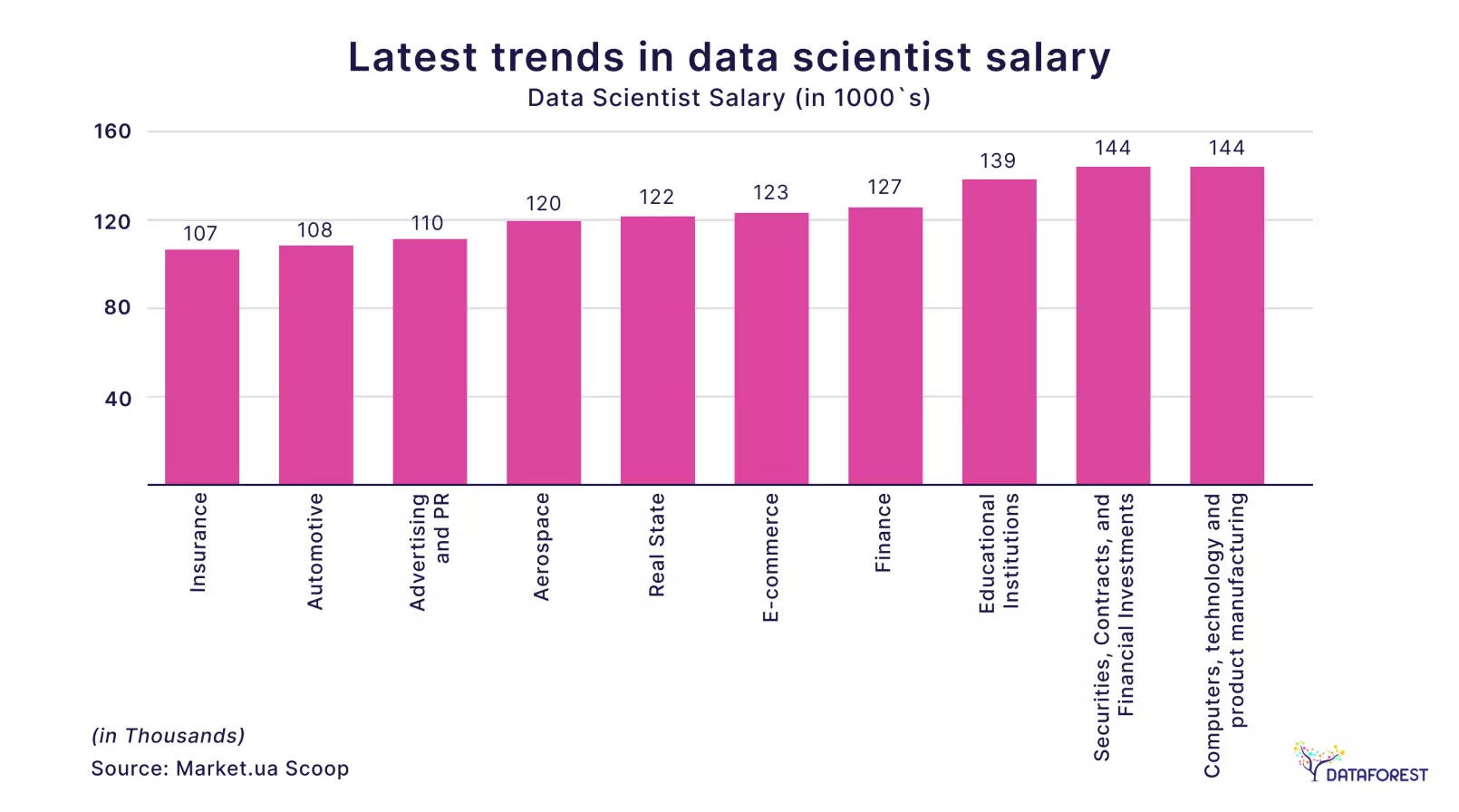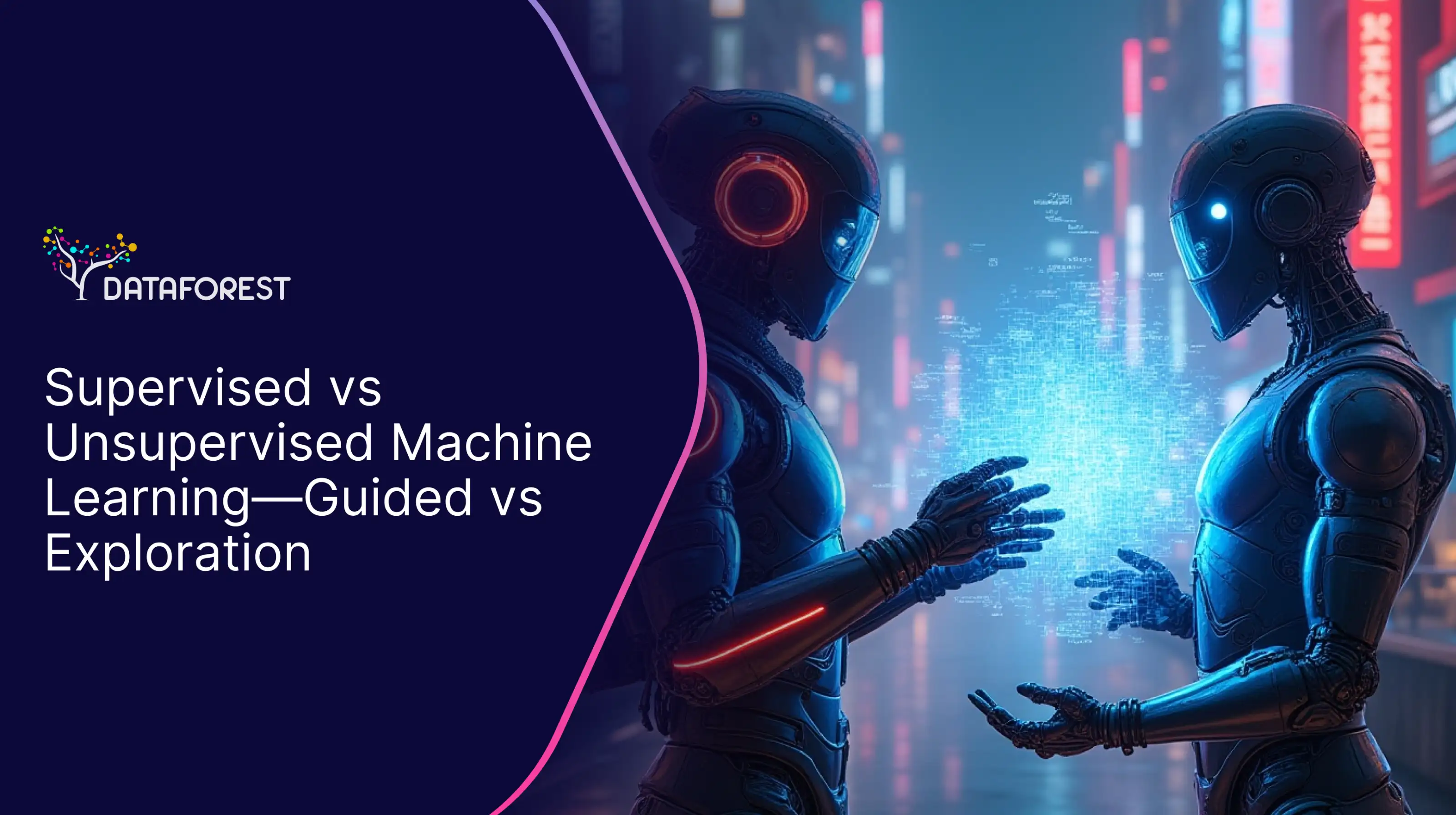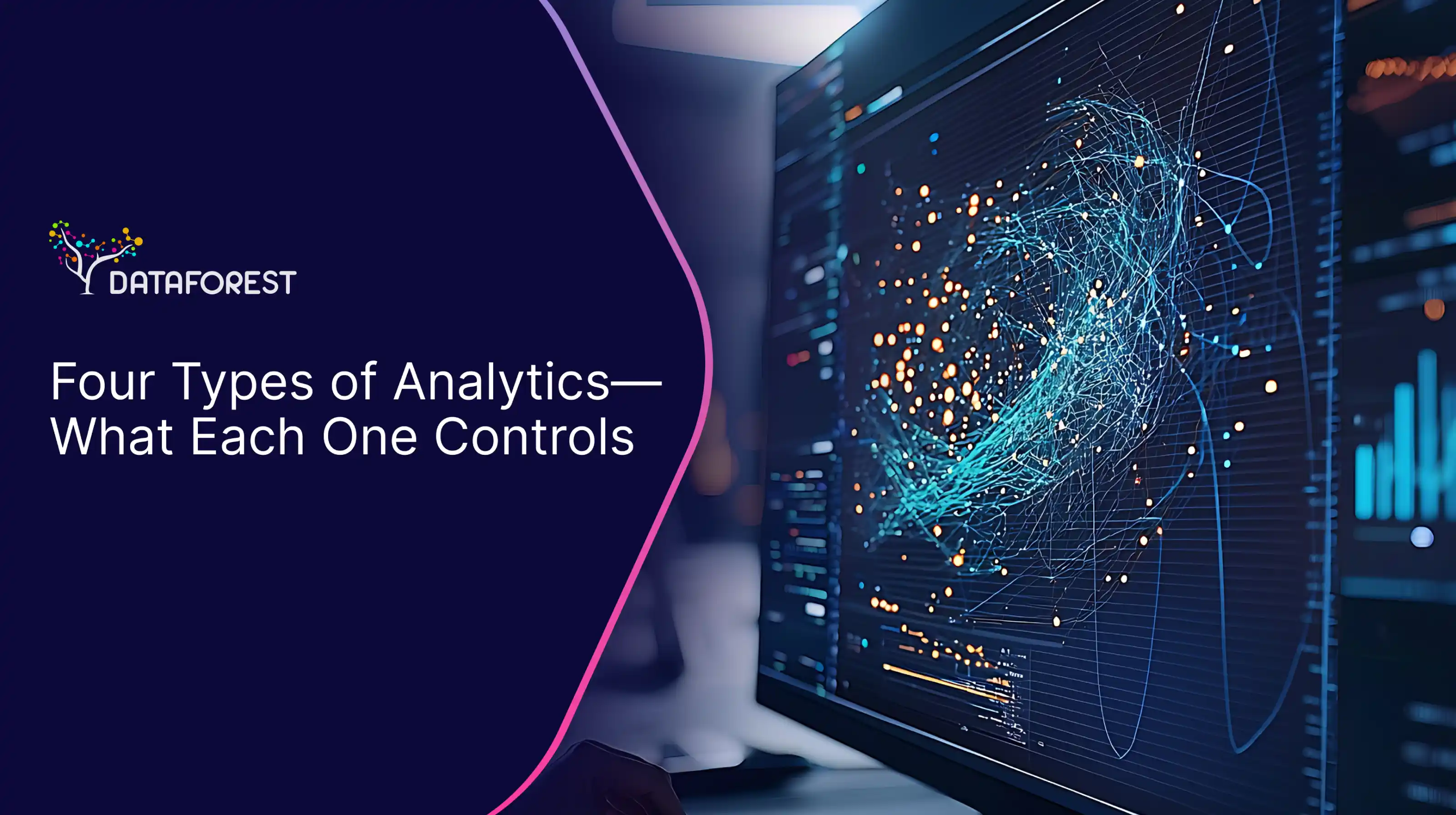A retail giant struggled with inventory issues. They had a massive dataset of sales and demand. To solve this, they used a powerful time-series forecasting tool. These data science tools are designed to analyze data collected over time, such as sales data, stock prices, or weather patterns. They identify trends, seasonality, and other patterns in the data to make accurate predictions. This tool analyzed historical data and predicted future demand. It helped the company avoid stockouts and overstocking. As a result, they saved money and improved customer satisfaction. If you think this is your case, then arrange a call.

Types of Data Science Tools
Data science tools are categorized into several broad types, each with specific functions and common denominators.
Data Acquisition and Data Science Storage Tools: These data science tools are primarily concerned with collecting, storing, and managing data—databases (MySQL, PostgreSQL, MongoDB), data warehouses (Redshift, Snowflake), and data lakes (Hadoop, S3).
Data Cleaning and Preparation Tools: These data science tools—Pandas, NumPy, and OpenRefine — clean, transform, and prepare data for analysis.
Data Exploration and Visualization Tools: These data science tools—Power BI, Tableau, Matplotlib, and Seaborn — aid in understanding and communicating data through visual representations.
Machine Learning and Modeling Tools: These data science tools—Scikit-learn, TensorFlow, PyTorch, and Keras — provide algorithms and frameworks for building and training machine learning models.
Model Deployment and Management Tools: These data science tools help deploy and manage machine learning models in production environments, such as MLflow and Kubeflow.
Big Data Tools: These data science tools, Apache Spark and Apache Flink, are designed to handle massive datasets.
Natural Language Processing (NLP) Tools: These data science tools are used for tasks involving human language, such as text classification, sentiment analysis, and machine translation – NLTK, spaCy, and Gensim.
Deep Learning Tools: These data science tools—TensorFlow, PyTorch, and Keras — are specialized for building and training deep neural networks.
Understanding Specific Needs for Data Science Tools
When picking data science tools, think about these things:
- What's your mission? What do you want to achieve with your data?
- Is your data a giant mountain or a small hill? How big and complex is it?
- What are the data science tools required to handle your specific data challenges?
- Do your people know their stuff? What are their skills and experience?
- Does it play well with others? Can the data science tools work with your existing systems?
- Can it grow with you? Will it handle more data and bigger projects in the future?
- How much can you spend? Set a budget and stick to it.
- Is there a community behind it? Look for data science tools with lots of help and resources.
- What have others done? See how other businesses have used similar data science tools.
A Data Science Project Requires a Clear Destination
Imagine planning a road trip from New York City to Los Angeles. Without a clear destination (goal), like visiting the Hollywood Walk of Fame or the Grand Canyon, you might end up driving aimlessly. Without knowing the routes (data types), you could get lost in the vast American wilderness. And without understanding the distance or potential roadblocks (scope), you might run out of gas or miss your favorite attractions.
Defining Project Goals, Data Types, and Scope
Clearly defining your goals provides direction and ensures you're working toward the right outcomes. If your goal is to predict customer churn, you'll focus on gathering data related to customer behavior, satisfaction, and demographics. Understanding the types of data you'll need is crucial for selecting appropriate tools and techniques. If you're analyzing text data (like customer reviews), you'll need data science tools for natural language processing. Similarly, if your project involves integrating data from multiple sources, you may require tools for data mapping to ensure consistency and accuracy. Defining the scope helps you stay focused, manage resources effectively, and avoid scope creep. If you overestimate the scope, you might waste time on unnecessary tasks. If you underestimate it, you might miss important aspects of the project.
Let's say a company wants to improve customer satisfaction. They define their goal as increasing customer satisfaction by 10% within the next year. To achieve this, they identify the data types they need, such as customer feedback surveys, purchase history, and demographic information. They also define the project's scope, including the number of customers to analyze, the timeframe for data collection, and the specific metrics they'll use to measure satisfaction. By clearly defining these elements, the company ensures that its data science tools are aligned with its overall business objectives and deliver the desired results.
The Importance of Clear Goals
The first step in choosing the proper data science tools is to clearly define your project goals. Imagine you're a marketing manager for a clothing company. Your goal might be to increase online sales by 20% within the next quarter. This clear objective will guide your data science tools selection. If you need to analyze customer behavior data to understand purchasing patterns, you'll prioritize tools like Google Analytics or Python libraries like Pandas. However, if you focus on building a predictive model to recommend products to customers, you'll need tools like Scikit-learn or TensorFlow.
The Breakdown of The Most Common Data Science Tools
These categories represent just a few of the many tools available to data scientists. The specific data science tools will depend on your project requirements, team expertise, and personal preferences.
Are you interested in the update? Book a call, and we'll tell you about suitable data science tools.
The Role of Data Science Tools
Data science tools are the backbone of modern data analysis and machine learning projects. They provide essential functionalities that enable data scientists to extract valuable insights from raw data.
The Data Science Tools Main Functions
- Data scientists collect data from various sources, ensuring it's clean and ready for performance. They scrub away errors, inconsistencies, and missing notes.
- They also explore the data, search for patterns and trends, and use visualization tools to paint a picture of the data, making complex information understandable and engaging.
- With a clear vision of the desired outcome, data scientists select the appropriate algorithms to build models. They train these models, feeding them data to learn and improve.
- Once the model is ready, data scientists evaluate its performance, ensuring it meets the desired standards. Then, they deploy it into the real world, where it can perform its magic.
- To handle data's increasing volume and complexity, scientists rely on data science automation tools to streamline repetitive tasks.
Open-Source vs. Proprietary Data Science Tools
By carefully evaluating these factors, you can decide on the most suitable data science tools for your organization.
Open-Source Tools
Open-source tools offer greater flexibility and customization, allowing users to tailor them to specific needs. A large and active community often contributes to open-source projects, providing extensive documentation, tutorials, and support. Open-source data science tools are generally free, making them accessible to individuals and organizations with limited budgets. The open-source nature of these tools ensures transparency, allowing users to understand how they work and contribute to their development.
However, some open-source tools may have a steeper learning curve compared to proprietary counterparts, especially for users without programming experience. While community support is often strong, it may not always be as immediate or comprehensive as paid support from proprietary vendors. Proprietary tools may offer more advanced enterprise-level features or integrations unavailable in open-source alternatives.
Proprietary Tools
Proprietary data science tools often come with dedicated support teams that provide assistance and troubleshooting. They may offer advanced features and integrations tailored to enterprise needs, such as scalability, security, and compliance. Proprietary data science tools are more user-friendly, especially for those without extensive technical knowledge.
However proprietary data science tools often come with licensing fees, which can be a significant expense for organizations with limited budgets. Relying on proprietary tools can lead to vendor lock-in, making it difficult to switch to alternative solutions in the future. Such data science tools may offer less flexibility and customization than open-source alternatives.
Five Essential Data Science Tools
Python: This versatile programming language handles everything from simple data manipulation to complex machine-learning models.
NumPy: If you need to perform complex mathematical operations on large datasets, NumPy is your go-to data science tool.
Power BI: This business intelligence tool transforms raw data into stunning visualizations that tell a compelling story.
Hadoop: If you're dealing with massive datasets too large to fit on a single computer, Hadoop is your solution. It distributes the data across multiple machines and processes it efficiently.
Amazon Web Services (AWS): AWS offers a wide range of data science services, from computing power to storage and machine learning tools. It's a personal assistant who handles all your data needs.
Choosing the Right Data Science Tools
When choosing data science tools, think about these things:
- Look for data science tools that handle data efficiently without sacrificing accuracy or speed.
- Choose data science tools that are intuitive and easy to learn, especially if you're new to data science.
- A strong community provides valuable resources, tutorials, and assistance when you encounter challenges. Look for data science tools with active forums and online courses.
- Consider your budget and choose data science tools that align with your financial resources. While open-source tools are free, proprietary tools offer additional features that come at a cost.
- As your data grows and your projects become more complex, your data science tools should be able to scale with your needs. Choose tools that increase workloads and data volumes without compromising performance.
Data Analytics Tools Benefits
Data science tools offer numerous benefits that enhance the productivity, efficiency, and effectiveness of data analysis and machine learning projects.
Improved Productivity
Many data science tools automate repetitive tasks, freeing up data scientists to focus on more strategic work. These data science tools streamline workflows and provide shortcuts, reducing the time it takes to complete tasks. By standardizing processes and workflows, data science tools ensure consistency and reproducibility in data analysis.
Scalability
Data science tools are designed to control massive datasets efficiently, allowing organizations to analyze large-scale data without compromising performance. Many data science tools data science support parallel processing, enabling faster execution of computationally intensive tasks. Cloud-based data science platforms provide scalable infrastructure adjusted to meet changing demands.
Reproducibility
Tools often integrate with version control systems, allowing data scientists to track changes and reproduce experiments accurately. Well-documented code and workflows ensure that experiments are easily replicated and understood by others. Using standardized data science tools and techniques can improve reproducibility and team collaboration.
Faster Experimentation
Data science tools facilitate rapid prototyping, allowing data scientists to quickly test different models and approaches. Tools support iterative web development, enabling data scientists to refine models based on feedback and experimentation. Many data science tools provide features for tracking experiments, making it easier to compare results and identify the best-performing models.
Data Science Tools: Your Business' Secret
Data science tools turn raw data into pure gold and help you see trends and patterns in your data that you might miss otherwise. This means you can make smarter choices that boost your bottom line. Data science These tools automate tasks, so you don't have to waste time on boring stuff. By analyzing customer data, you tailor products and services to the needs. This leads to happier customers and a stronger reputation. Data science tools give you a competitive edge. They identify opportunities and risks that your competitors might miss and spot potential problems before they become disasters.
So, if you want to take your business to the next level, invest in data science tools.
Specialized Needs in Data Science Tools
When we talk about specialized needs in the context of data science tools, we're referring to the unique requirements that a particular business or project may have.
Industry: A healthcare organization may require tools to store sensitive patient data and comply with regulations like HIPAA. A financial institution, on the other hand, may need tools to drive large datasets and perform complex financial calculations.
Data Type and Volume: A business dealing with unstructured text data may need NLP tools, while a company working with large-scale numerical data may require tools that lift distributed computing.
Use Case: A business aiming to build a predictive model for customer churn may require different data science tools than a business trying to optimize supply chain logistics.
Team Expertise: The data science team's skills and experience also influence tool selection. If the team is proficient in a particular programming language or framework, it may be more efficient to choose tools that align with their expertise.
Integration with Existing Systems: The data science tools must be able to integrate seamlessly with the organization's existing IT infrastructure, including databases or data warehouses.
Tailoring Data Science Tools to Specialized Needs
It's often a good idea to experiment with different data science tools and resources to find the best fit.
Healthcare Industry
- Apache Spark: For handling large healthcare datasets and performing distributed computations.
TensorFlow: For deep learning applications in medical image analysis and natural language data science processing tools.
- Kaggle: A platform for data science competitions and datasets, including many healthcare-related challenges.
Financial Services Industry
- Python with Pandas and NumPy: For financial data analysis and numerical computations.
- QuantLib: A C++ library for quantitative finance with functions for pricing financial derivatives.
- RAPIDS: A suite of GPU-accelerated data science libraries for financial analytics.
E-commerce Industry
- Apache Kafka: For real-time data streaming and processing in e-commerce web applications.
- TensorFlow Lite: For deploying machine learning models on mobile devices for personalized recommendations.
- AWS SageMaker: A cloud-based platform for building, training, and deploying machine learning models.

The Ever-Evolving Landscape of Data Science
As new challenges and opportunities arise, data science tools and techniques are constantly being developed and refined to meet these evolving needs. DATAFOREST knows because of great experience. As businesses generate and collect more data, there is a growing need for tools that hold larger datasets and complex data structures efficiently. Breakthroughs in machine learning algorithms, such as deep learning and reinforcement learning, drive the development of new data science cloud tools and techniques. It is applied to various industries and domains, creating specialized data science tools for specific use cases. Advancements in hardware, cloud computing, and big data technologies enable our data scientists to work with more complex models. Please complete the form, and together, we will select the data science tools exclusively for your case.
FAQ
Are there data science tools specifically designed for big data analytics and processing?
These data science important tools are often distributed systems that can handle massive datasets and complex workloads. Some popular examples include Apache Hadoop, Apache Spark, and Apache Flink. These tools offer scalability, fault tolerance, and distributed computing, making them ideal for handling big data challenges.
Can you recommend any data science software tools for data visualization and reporting?
Tableau and Power BI are popular choices for creating interactive dashboards and reports. Matplotlib and Seaborn are Python libraries that offer flexible options for creating custom visualizations.
Can you recommend data science tools for specific tasks like natural language processing or image recognition?
NLTK and spaCy are popular choices for natural language processing. TensorFlow and PyTorch are widely used deep learning frameworks for image recognition. These data science basic tools provide the necessary algorithms and functionalities to tackle these specialized tasks.
How can I assess the performance of data science tools for my specific project?
You can assess the performance of data science common tools for your specific project by (1) Comparing the performance of different tools on your dataset using relevant metrics like accuracy, precision, recall, or F1-score, (2) evaluating how well the data science tools hold increasing data volumes and complexity without compromising performance, and (3) gathering feedback from your team members on the ease of use, efficiency, and effectiveness of the data science tools.
How do I avoid overloading my system with too many data science tools?
To avoid overloading your system with too many data science tools, focus on the core functionalities you need. Start with essential tools and gradually add others as your project requirements grow. Prioritize the most used tools for data science that are well-integrated and efficient, and consider using cloud-based solutions to offload computational resources.
Should I always use open-source tools for data science, or are proprietary tools worth considering?
While open-source, the most important tools for data science, offer many benefits, proprietary tools can also be valuable. The choice depends on your specific needs, budget, and team expertise. Proprietary tools often provide dedicated support and enterprise-level features, while open-source data science tools offer flexibility and community support. Consider both options and evaluate which best aligns with your project requirements.


.webp)






%20(1).webp)















